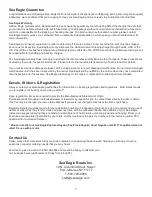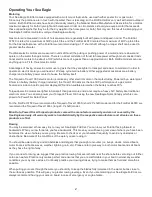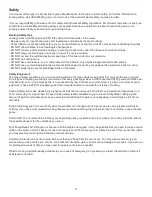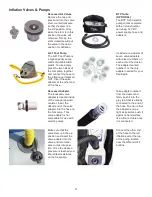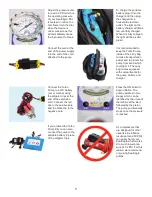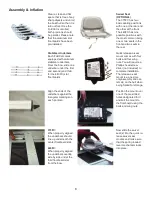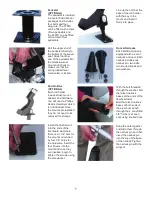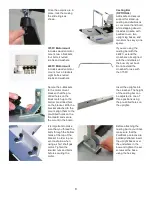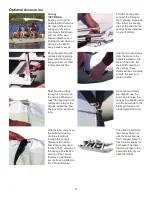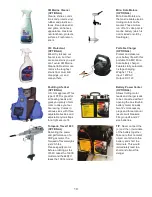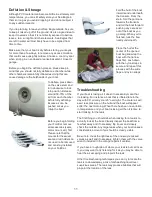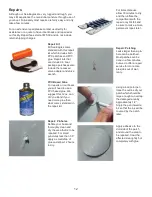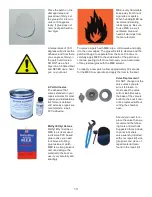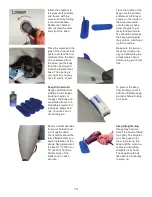
Deflation & Storage
Although PVC material can become brittle in extremely cold
temperatures, you can still safely store your Sea Eagle in
them so long as you avoid dropping it and do not subject it
to any sudden impacts.
If you’re planning to leave your Sea Eagle outside, be sure
to keep it raised up off of the ground. Its also a good idea to
keep it covered so that it is not directly exposed to berries,
leaves, rain, sunlight and other elements. Sea Eagles that
are left in water will most likely have to be emptied from
time to time.
Make sure that your boat is dry before storing your kayak
for more than a few days, to remove any excess moisture
that could cause unsightly mildew. Choose a cool, dry spot
when storing in an enclosed area like basement, closet or
garage.
Before you begin the deflation process, please keep in
mind that you should not fully deflate one chamber while
other chambers remain fully inflated as doing this can
cause damage to the bulkheads of your boat.
To deflate, press down
on the valve stem and
turn clockwise to lock
into position. Release
around 50-75% of the
air from each chamber
before fully deflating.
Excess air can be
pushed out as you
rollup the boat.
Before you begin folding
your FoldCat, remove
all accessories (seats,
motor mount, etc) first.
Please note that the
mounts for the swivel
seat and rod holders do
not need to be removed
and can stay installed
on your FoldCat.
Fold the hull of the boat
inwards and underneath
the transom. From the
stern, fold the pontoons
towards the transom
and roll the boat forward
pushing any excess air
out of the boat as you
go along. When you're
finished, tuck the bow
neatly underneath.
Place the hull at the
center of the opened
boat bag and wrap the
boat with the narrow
flaps first. Lash down
with the nylon straps to
secure and repeat this
process with the wide
flaps and nylon straps.
Troubleshooting
If your boat is losing air it doesn’t necessarily mean that
its leaking. For instance a boat that is inflated late in the
day with 90° air may cool 20° overnight. The cooler air will
exert less pressure on the hull and the boat will appear
softer the next morning. When there has been no variation
in temperature and your boat is losing air then it is time to
start looking for the leak.
The first thing you should do when looking for a leak is to
actually look at the boat. Visually inspect the boat from a
few feet away and if necessary, flip it over and closely
check the outside. Any large leaks when your boat looses a
considerable amount of air should be clearly visible.
Be sure to check the tightness of the one-way recessed
valves as well and if necessary, tighten them with the valve
wrench included in the orange repair kit canister.
If you have a rough idea of where your leak is but can’t see
it, you may want to try listening for it as you may be able to
hear the air escaping and pinpoint the leak.
Other troubleshooting techniques you can try to locate the
leak is to dowse/spray a mix of dishwashing liquid over
suspicious areas. The leak may produce bubbles that will
pinpoint the location of the leak.
11


